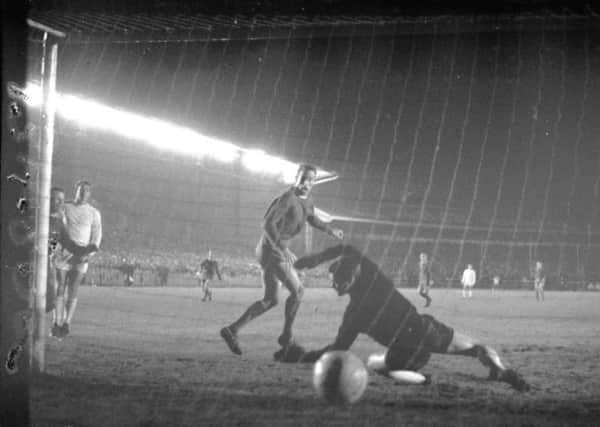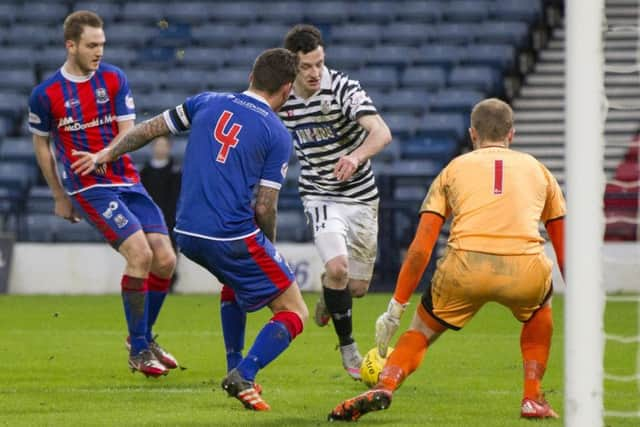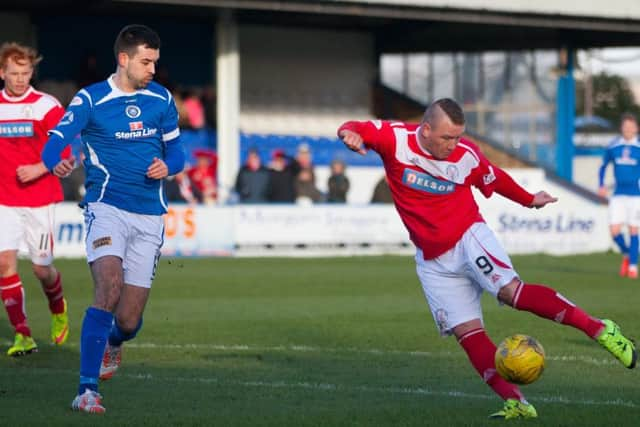Who are Scotland's oldest professional football clubs


We’ve compiled a list of the oldest teams still playing across the top four tiers of the Scottish Professional Football League.
QUEEN’S PARK FC (1867), LEAGUE TWO
Scotland’s oldest amateur football team was formed on July 9, 1867 at 3 Eglinton Terrace on Glasgow’s South Side. As well as playing their home games at Scotland’s national football stadium, Hampden, no player to have walked onto the field in Queen’s Park FC colours has ever collected a wage for their services. This decision to “Ludere causa Ludendi”, or play for the sake of playing, makes Queen’s unique as one of the few ‘amateur’ teams in the professional leagues.


Advertisement
Hide AdAdvertisement
Hide Ad‘The Spiders’, as they are known, currently hold the fourth spot in the League Two table, with just one point off Annan Athletic and Clyde FC above them. Queen’s Park has also proven to be a vital training ground for footballing greats such as Sir Alex Ferguson and FIFA Technical Director and ex-Scotland manager Andy Roxburgh.
KILMARNOCK FC (1869), PREMIERSHIP
Two years after Queen’s Park was created, Killie was born as Scotland’s oldest professional football club. Their long history has seen them qualify for European competition several times throughout the years, with their most recent accolade being the Scottish League Cup in the 2011-12 season.
Formed by a group of cricketers looking for a sport to play during the off-season, Kilmarnock FC originally played a game more akin to rugby than Association Football (hence the name of their stadium, Rugby Park). The team has played there continuously since 1899 - apart from a four-year spell during the Second World War, when the government requisitioned the stadium as a fuel depot.


STRANRAER FC (1870), LEAGUE ONE
‘The Blues’ currently occupy fourth spot in League One, despite a mixed history that according to their own website saw the club awarded “more wooden spoons than Delia Smith”. Since 1907, Stranraer has called Stair Park home after an almost-nomadic search for a home in the East End of the town.
The Club won the Scottish Challenge Cup in 1996 and the Scottish Second Division in the 1993-94 and 1997-98 seasons; arguably their best victories in 146 years.


DUMBARTON FC (1872), CHAMPIONSHIP
Dumbarton FC have existed since 1872 and are currently eighth in the lower reaches of the Championship table. Their current stature is a far cry from their form in the early 19th century, where they won the Scottish Football league in its first two seasons.
‘The Sons’ also have the dubious honour of being the sole Scottish league champions to not have competed in the current format of the Scottish Premiership, having last played top-tier football in 1985.
RANGERS FC (1872), CHAMPIONSHIP


The Ibrox club recently won promotion to the top flight after winning this season’s Scottish Championship crown in the same week they also secured the Petrofac Training Cup. They’ve won 54 top tier titles throughout their storied history, starting in 1891 and securing the most recent in 2011.
Advertisement
Hide AdAdvertisement
Hide AdIn 2012, Rangers suffered liquidation and had to reapply to the Scottish leagues. They were denied access to the top flight (then called the SPL) but were allowed to make their way through the lower leagues by starting in the Third Division (now called League Two). Whether or not the club has an “unbroken” history has been a source of much contention, with many claiming the Govan giants are a “new club”. However, the SPFL, including chief executive Neil Doncaster, has stated categorically that they remain the same club.
HAMILTON ACADEMICAL FC AND HEARTS FC (1874), PREMIERSHIP
Both Hamilton Accies and the Jam Tarts play in the Scottish Premiership, with both being founded in the same year. Hamilton are the sole British football club to have been formed from a school football team, with the club last winning the first division trophy in 2007/08. The team was promoted to the Premiership following their penalties victory over Hibernian to secure the runner-up spot in the 2014/15 Scottish Championship season.
Heart of Midlothian emerged from the eponymous Dancing Club based in Edinburgh; in itself named after the old tolbooth of Edinburgh that used to exist on the Royal Mile. The club has enjoyed several big successes over the years, including the Scottish Championship title in 2014/15 and the Scottish Cup in 2011/12 respectively. Rumour has it that the dance hall friends were directed away from the Tron Kirk to the East Meadows by a policeman who thought this the best plan of action for the budding footballers.
HIBERNIAN FC (1875), CHAMPIONSHIP
Hibernian FC was founded by the city’s Irish community just a year after their rivals. In 1891 Hibernian ceased to operate as a football club for two years before playing matches again in 1893. However, the club state their history as starting in 1875 with two trophies won prior to 1891 among their list of honours.
The Hibees have had a tumultuous performance record marred by relegation and re-promotion and back again, with the club claiming the Scottish League Cup in 2006/07 as its last major accolade.
For many Hibs fans, the ‘Famous Five’ of Gordon Smith, Bobby Johnstone, Lawrie Reilly, Eddie Turnbull and Willie Ormond - who helped the club secure three championships in four seasons between 1948 and 1952 - are still revered as their greatest players.
FALKIRK FC (1876), CHAMPIONSHIP
Continuing the flurry of clubs created during the 1870s, Falkirk FC have been around since 1876 and have won the First Division no less than four times in their long history. Only two years after its formation, ‘The Bairns’ joined the Scottish Football Association and reached the second round of the Scottish Cup in the year of its creation.
The club’s Brockville Park, used from 1885 until 2003, was outgrown by the club in order for it to meet the stringent SPL stadium criteria which had previously denied the club three separate promotions. Since 2003, the club has played its games at the 8,750 seater venue, Falkirk Stadium.
ST MIRREN (1877), CHAMPIONSHIP AND CLYDE (1877), LEAGUE TWO
Advertisement
Hide AdAdvertisement
Hide AdSt Mirren was originally formed as a gentleman’s club for those who wished to play the game alongside cricket and rugby. By 1877, the team had decided to play solely association football, and took the name of St Mirin, the town’s patron saint. St Mirren won the Scottish League Cup in 2012/13, though they have are no stranger to relegation, having dropped down from the Scottish Premier League and the Premier Division of the Scottish Football League before.
Originating on the banks of the River Clyde at Barrowfield, Clyde FC played in an area known for its textile, chemical and factory workers, which provided a talent pool for the club to draw on. Having spent most of its career as a minnow in Scottish football, the club’s last accolade was the 1999/00 Second Division title.
ARBROATH FC (1878), LEAGUE TWO
‘The Red Lichties’ currently ply their trade in League Two, where they sit just above arch-rivals Montrose in eighth place. So-called because of the red harbour light used to guide ships back to the port from the North Sea, Arbroath also previously held the accolade for the largest victory in worldwide senior football, where they beat Aberdeen Bon Accord 36-0 in September 1885.
Arbroath were Third Division champions for the 2010/11 season, with their earliest achievement the Division II title in 1934/35.
